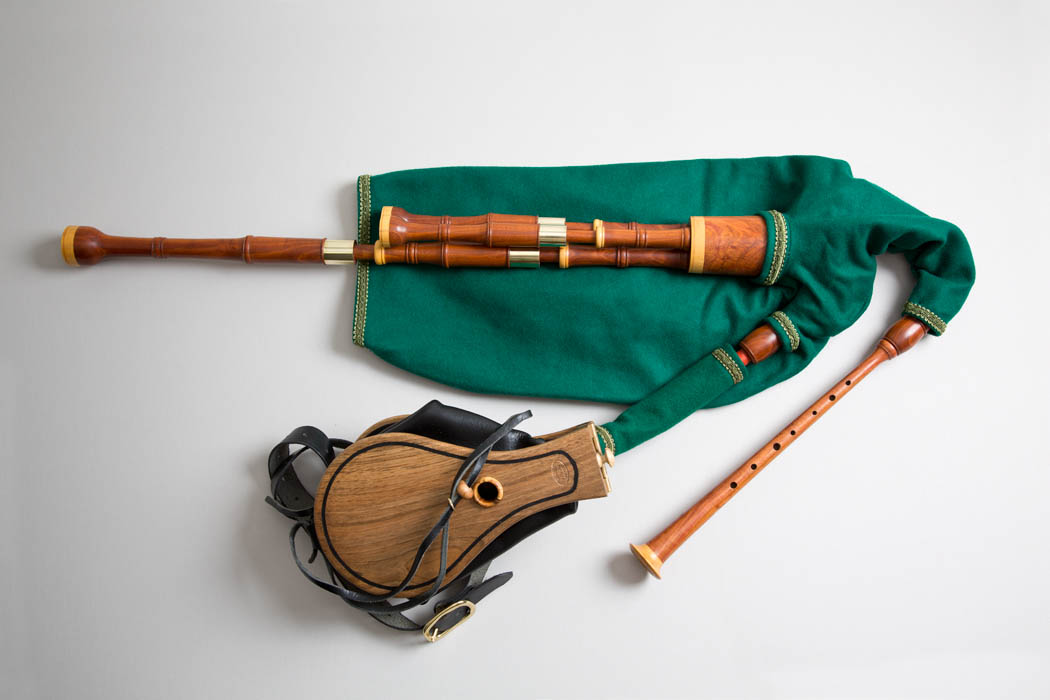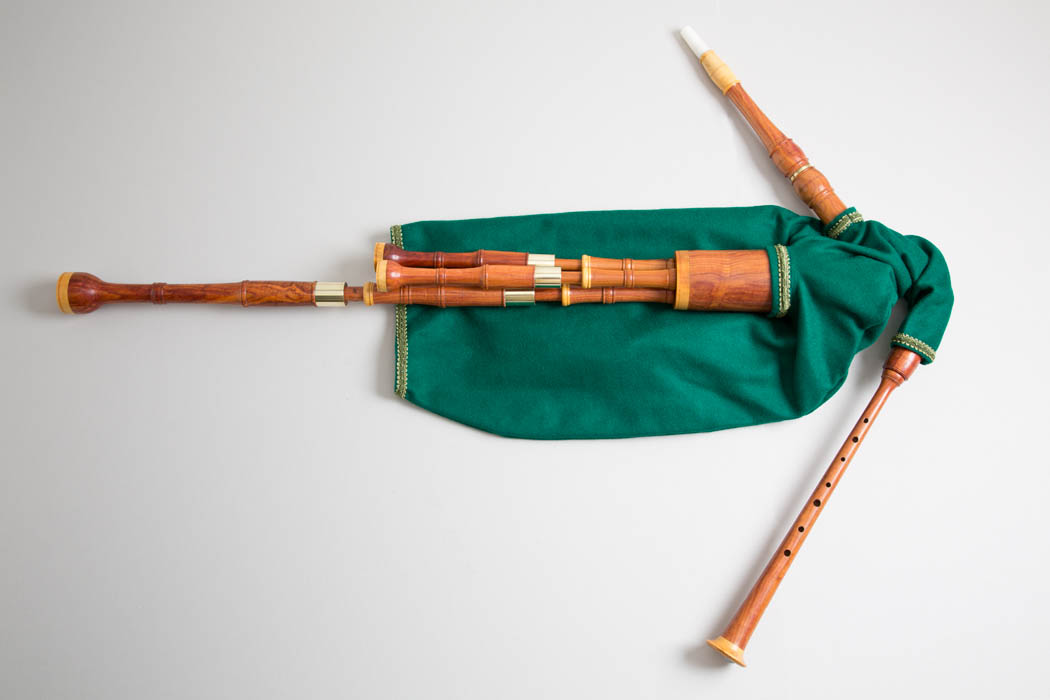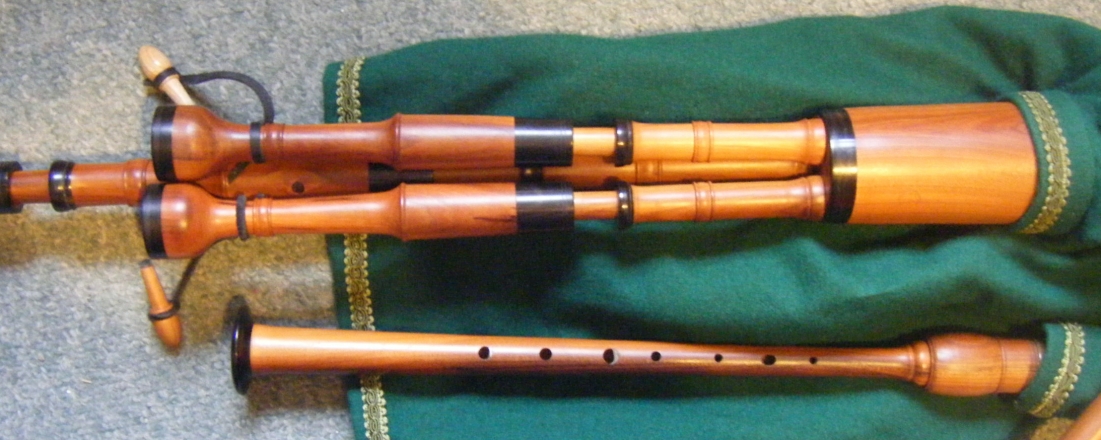I first measured and copied these pipes in the 1990’s. Several of the fingerholes on the original chanter have been greatly enlarged - especially the C hole. It was hard to assess what actual pitch it originally played at; my approach was to modify my design so that it would play in concert A using a special reed that I have developed, using fingering similar to the Highland pipes. Though somewhat quieter than its Highland cousin it has a loud bright tone, as one might expect for a pipe designed for outdoor playing, such as Ritchie would need on his morning and evening rounds of the town.
It plays a 'Scottish' scale with flattened top and bottom leading notes. though an almost-chromatic scale is possible using cross-fingerings, which greatly increases its musical possibilities.
The original pipes have the splendid combination of one bass drone and two tenors, set in their common stock. (I am prepared to discuss fitting a baritone or alto drone instead of one of the tenors).

The chanter and drone ends are of boxwood and the drone mounts are of brass; horn mounts and ferrules can be fitted as an extra.
The bag is hand-sewn leather, with a traditional green baize woollen cover.
I have put a great deal of care and attention into the design and construction of the bellows, based on many of the better Scottish bellows I have measured in the collections. The leather is handsewn to the clapper boards which are finely made from walnut tree planted by my father in the 1940’s. The boards have a solid- drawn hinge, which gives a much more positive action than the simpler and more commonly employed system of using leather as a hinge. For more information, visit my bellows page
I am quite prepared to make mouth-blown Border Pipes instead of bellows.


